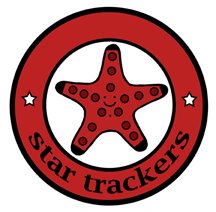1. Take a photograph.
First, determine the location of the madreporite (Figure 1).

Figure 1. Location of the madreporite in a knobbly seastar.
Then, orientate the seastar such that the side with the madreporite is nearest to you compared to the other sides (Figure 2).

Figure 2. Correct and wrong orientations of seastar when taking photograph. Madreporites are circled in red.
Finally, take a clear photograph of the aboral profile of the seastar from top-down (Figure 3).

Figure 3. Point camera perpendicularly to the aboral side of the seastar and shoot.
Note: If the seastar is underwater, remove it out of water for photography and then return the animal to its original location. The body of the seastar may be contracted in a way that some knobs are blocked by other knobs and/or the arm. In such a case, induce the retraction of the knobs and arms by gently tapping them to increase the visibility of all knobs. Care should be taken to minimise capturing shadow in the photograph by shading the animal from direct sunlight.
2. Obtain measurements.
Turn over the seastar and take measurements of the animal from its oral side. Two types of body length are to be taken: minor radius and major radius. Minor radius is the length from the mouth to the margin of the disc between two arms whereas major radius is the length from the mouth to the tip of an arm (Figure 4).

Figure 4. Definitions of minor radius and major radius.
Obtain measurements to the nearest millimetres (mm) and for all sides. Measurements should be taken in clockwise order starting from the madreporite (Figure 5).

Figure 5. Correct order of measurements.
3. Record coordinates of location.
This should be obtained using a handheld GPS (Global Positioning System) unit with position format set at ‘hdddºmm.mmm’ (e.g., N1º24.285’ E104º2.823’). Coordinates should be marked as close as possible to the seastar. If a GPS unit is not available, describe the location in as much details as possible (e.g., 2 m east of the ‘white beacon’ at Chek Jawa).
4. Record time of sighting.
Time of sighting to be recorded in 24 hour designation (e.g., 0832 h).
5. Describe type of microhabitat.
Examples of microhabitat type are:
a. Mud
b. Sand
c. Gravel
d. Rock
e. Seagrass
6. Send the photographs and details of each individual to chimck@yahoo.com. Please also provide the date and general location of sighting (e.g., Cyrene reef, Chek Jawa and Pulau Semakau) and your full name.



No comments:
Post a Comment